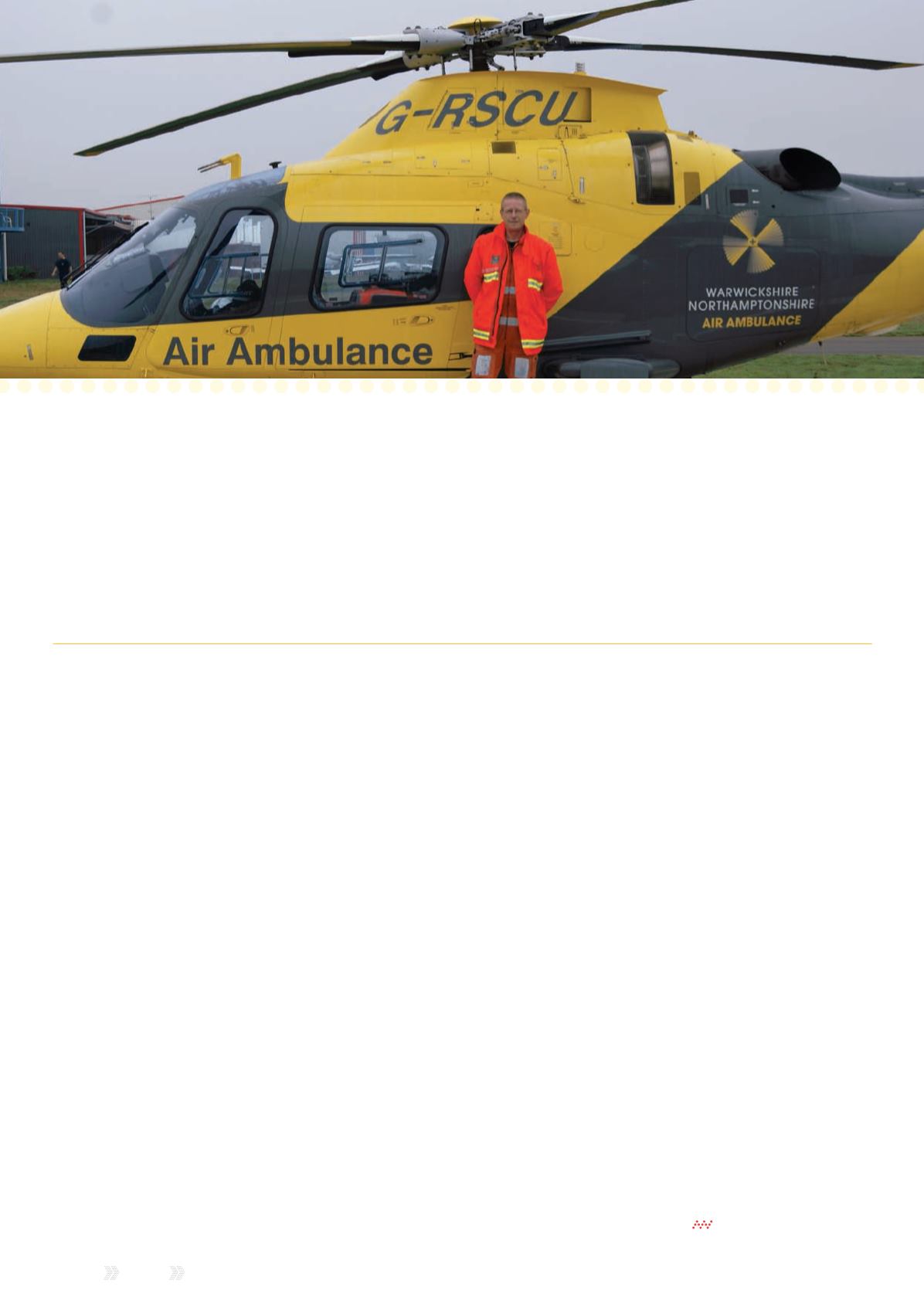
28
|
Reach
Issue 6 2014
Richard helps the
Air Ambulance celebrate
ten years in the air
W
arwickshire &
Northamptonshire Air
Ambulance (WNAA), one
of Airwave’s supported charities,
has celebrated its 10th birthday.
As part of the celebrations, the
charity has been talking to its longest-
serving volunteers and crew members.
Richard Craske has been a pilot
with The Air Ambulance Service since
April 2004 and is one of the charity’s
longest serving pilots.
Richard joined as a full-time pilot
and was responsible for training new
pilots into the HEMS (Helicopter
Emergency Medical Service) role at
the local ying school. He played
an integral part in helping set up
Derbyshire, Leicestershire & Rutland
Air Ambulance in 2008 and was
responsible for the rst three weeks
of missions that the service carried
out. He has also own for The
Children’s Air Ambulance.
Since starting with the Air
Ambulance, Richard has been
responsible for more than 3,000
rescue missions, and he still ies for
The Air Ambulance Service once or
twice a month.
“I started ying helicopters in 1996”
said Richard. “I have become a ying
instructor, a chartered pilot and an
examiner. I have also been teaching and
testing pilots for the last 18 years. But
the pinnacle of my career is working for
The Air Ambulance Service.”
Richard says his job would be so
much harder without the support of
the charity’s paramedics and doctors.
“All the pilots are capable of
navigating, but the speed in which we
do it, it would be slower if we did it on
our own. The helicopter is operated
as single pilot but we operate as a
crew. The pilot is in charge and the
paramedic is the backbone of the
navigation. The doctor also helps out
with smaller maps and can provide
grid references. It’s a fantastically
practiced and well run system.”
Richard, along with all Air Ambulance
pilots, also assists the medical team
with anything that they might need.
“On the scene the pilot becomes a
pair of hands to help them, so we end
up carrying a lot of equipment for the
crew. We obviously don’t get involved
in administering drugs, but if there
is no other support available, we
sometimes have to perform CPR, but
that’s no more than what they would
ask a passer-by.”
Richard has seen some great
changes within the Air Ambulance
during his tenure.
“I’ve seen more advanced
helicopters and greater emphasis on
medical training. Everyone does a lot
more than they used to. It’s become a
well-drilled system.
“You develop a relationship with
members of staff. You have to have a
great amount of trust in your crew and
they have to trust the pilot. Because
the training is robust, it doesn’t take
long to develop that trust.
“There is not a better job in
helicopter ying in my opinion and I
am immensely proud of what I do.”
Each rescue mission costs between
£1,400 and £1,700. The charity
receives no Government funding
and relies entirely on donations and
corporate sponsorships to keep its
helicopters ying and saving lives on
a regular basis.
To nd out how you can help, please
visit
.
org.uk
Richard Craske has been responsible
for more than 3,000 rescue missions


